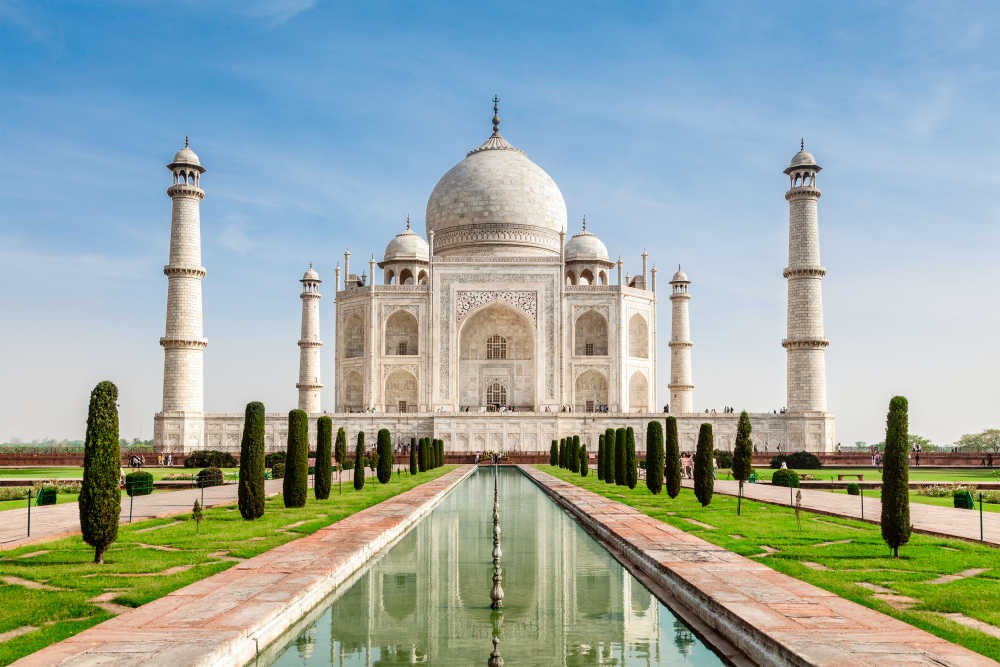India’s modern history consists of war, rebellion, independence, and all that comes along with the establishment of a new nation. From World Wars to independence from the British to the Indo-Pakistan wars, a lot has happened for the young sovereign state in the past century.
When World War One broke out, India was still under the British crown and was therefore an automatic contributor to the Triple Entente’s war efforts. Over one million Indian troops joined the fight, making the Indian army one of the largest armies involved. In the Second World War, India sent over 2.5 million troops to fight under British command. While India itself was not really in a position of authority during these wars due to their contemporary lack of independence, both events were still a notable part of the country’s history given the number of men who joined the fight alongside Britain.
Independence, though the Allies won World War II, the effects of the conflict were impressively damaging for the British Empire. Agreements with the United States led Britain to begin decolonizing many of its territories and paved the way for India’s independence movement to be accelerated. On June 3rd, 1947, the last British Governor General of India, Viscount Louis Mountbatten, declared the partitioning of British India into India and Pakistan, and the nations became their own sovereign states by August 15th of the same year.
This break from the British crown gave both countries the choice of staying in or leaving the British Commonwealth, but in 1949, India chose to stay. By this point, Jawaharlal Nehru had become independent India’s first Prime Minister after serving as the leader of the Indian National Congress prior to 1947. The Deputy Prime Minister was Vallabhbhai Patel, who played a significant role in teaming up with Mahatma Gandhi and Jawaharlal Nehru during the independence movement.
Under his and Prime Minister Nehru’s watchful eyes, a dramatic population exchange occurred between the Hindu majority of India and the Muslim majority of Pakistan. In addition to the first Kashmir War between the young neighboring nations, the fate of Jammu and Kashmir was still unsettled, and Pakistan, anticipating the dissension, decided to mobilize tribal militia groups from the Northwest Frontier Province a few weeks before the war actually broke out.
The reason why Jammu and Kashmir’s destiny was so uncertain was due to the fact that the princely state was led by a Hindu Maharaja but was made up of a Muslim majority. There was heavy pressure from both sides to accede to either India or Pakistan, but some citizens of the state were even considering a push for complete independence from both countries. Tensions boiled over at the start of October 1947 when a pro-Pakistani tribal rebellion in Kashmir broke out, and the Pakistani troops quickly came to their aid. Pakistan’s goal was to seize the capital Srinagar within the first weeks of their arrival.
Eventually, the Maharaja called on India for military assistance, and India agreed under the condition that Kashmir become part of India. The state’s Prime Minister and Maharaja both accepted, and the Instrument of Accession was signed on October 26th, 1947. Still, Pakistan and their tribal allies were unwilling to give up the fight. Combat continued until December of 1948, and there didn’t seem to be an easy solution without major reinforcements and aggressive action from the Indian side.
Desperate for a resolution, India approached the United Nations for support, and a ceasefire between India and Pakistan was reached with the UN’s help on January 1st, 1949. The same year, other princely states such as Manipur and Tripura also acceded to India, and the nation’s constitution was close to being established. In November of 1949, Dr. B.R Ambedkar and his committee drafted the official Constitution of India, which would come into effect and turn the country into an independent democratic republic on January 26th, 1950. Dr. Rajendra Prasad would become the first president of the republic.
The first democratic elections were held in India in 1951 through 1952 over a four-month span and brought a turnout of over 60 percent, re-electing both Prime Minister Jawaharlal Nehru and President Rajendra Prasad for second terms. During Nehru’s second term, many reforms and legislative changes were made, and a Soviet-inspired five-year plan was composed for the economy. Rights for women in Hindu societies were increased, caste discrimination was condemned with new legislation, and school education was encouraged. Nehru also appointed the State’s Reorganization Commission, which led to the passage of the State’s Reorganization Act in 1956.
Many state borders were rearranged to create a better separation of linguistic and ethnic majorities. As part of this decision, many other milestones were reached during this time as well, including the launching of an atomic energy program in 1954 and India’s first computer being installed in 1955. Foreign policy under Nehru involved the co-founding of the Non-Aligned Movement, maintaining friendly relations with both the US and the Soviet Union. Despite this more neutral stance, though, India decided in 1961 to invade and annex Portugal’s colony of Goa after repeated unsuccessful petitions for a peaceful transfer.
The following year, the Sino-Indian War between China and India briefly broke out due to a dispute over the Himalayan border, but a ceasefire was unilaterally declared by China only a month after the conflict began. There was a short span of peace during which Prime Minister Nehru passed away on May 27th, 1964, and was succeeded by Lal Bahadur Shastri. In 1965, India was again into war with Pakistan over the state of Kashmir. No notable changes were made by the warfare, and a ceasefire was eventually pushed on both sides by foreign powers who feared escalation. The Tashkent Agreement was signed by India and Pakistan on January 10th, 1966, and had been mediated by the Soviet Union. Mysteriously, Prime Minister Shastri died the night after the agreement was signed.
Either way, the Prime Minister’s untimely death resulted in Indira Gandhi, the daughter of Nehru, taking Shastri’s place in the next year’s election. The Indian National Congress party won fewer seats than they had in the past, likely due to the growing unemployment, economic stagnation, and rising prices brought about by the party’s leadership. So, her Prime Minister’s political advisor came to the aid of her reputation and advised the shift towards more socialist policies, including the slashing of the Privy Purse agreement, which gave payments to ruling families of the former princely states as part of their original deal to accede to India back in 1947.
Prime Minister Gandhi’s other decisions, including major attacks on the Congress party’s hierarchy and the subject of nationalizing the nation’s bank, earned her increased popularity amongst the masses. Gandhi won re-election in 1971 and had now obtained an even larger majority, which only grew further as a result of her decision to intervene in the Bangladesh Liberation War, bringing about the third Indo-Pakistani war. The conflict resulted in the freedom of East Pakistan, now known as Bangladesh.
India also increased its involvement in world affairs, signing a 20-year Indo-Soviet Treaty of Peace, Friendship, and Cooperation in August of 1971, aligning with the Soviet Union and adding strain to its relationship with the United States. In
1973, a rebellion broke out in the kingdom of Sikkim, led by anti-royalist rioters who wished to abolish the monarchy. After two years of discord, Sikkim’s Prime Minister reached out to India’s government with an appeal for Sikkim to become an Indian state.
The offer was taken, and the Indian army made their way to Gangtok in order to gain control in the region and disarm the Sikkim palace guards. A referendum was then held, showing a 97.5% favor for putting an end to the monarchy and integrating into India. On May 16th, 1975, that wish became a reality, making Sikkim the 22nd state of the Indian Union. While India grew, Prime Minister Gandhi’s popularity now took a downward spiral as allegations of corruption from the people. Indira Gandhi’s power was at risk as her opposition from all sides came together to protest the Prime Minister’s accused dictatorship.
She eventually advised President Fakhruddin Ali Ahmed to declare a state of emergency in order to give her additional powers and the ability to suspend the civil liberties of their citizens, under the guise of maintaining law and order. State and national elections were also postponed, and almost 1,000 members of the opposition were thrown into prisons, protests being banned indefinitely. While the economy was actually improving by the lack of political unrest and new productivity, the government was continuously accused of corruption and abuses of power.
Making it no surprise that Indira Gandhi and her Congress party were routed in the 1977 general elections by the Janata party. Morarji Desai became the new Prime Minister, then Charan Singh became the fifth Prime Minister in 1979 as the Janata coalition fell into disarray. Singh’s interim government was replaced in January of 1980 by Indira Gandhi and her Congress party once again. Although after a rise in tensions and violence in the Sikh community of India following Operation Blue Star and the raid of the Golden Temple, which was being used by rebellious Khalistani militants as a hideout, Indira Gandhi was assassinated by her own Sikh bodyguards in 1984. Anti-Sikh riots erupted in Delhi, and thousands of Sikhs perished as a result. Members of Congress were accused of inciting the violence, but the party was fairly unfazed and moved on to choose Rajiv Gandhi, Indira’s eldest son, as her replacement.
Under Rajiv’s administration, Parliament was dissolved in 1989, the Congress party gained a 415 to 545 majority, and many reforms took place, as well as improved relations with the United States. Prime Minister Rajiv had a mostly flawless reputation, known by the press as “Mr. Clean,” until a scandal was unearthed revealing that a weapons contract between India and Sweden provided kickbacks from the Swedish arms dealer for multiple politicians on both sides, including Rajiv Gandhi himself. The Congress party’s popularity plummeted once again, and Singh became the next Prime Minister after the 1989 elections.
More governmental unrest followed until Narasimha Rao took power in 1991 and made sweeping economic and political reforms while the Bombay riots and other Hindu-Muslim conflicts exploded across India. New corruption stripped most support from Rao’s administration and party, and they were humiliated at the next election by the Bharatiya Janata Party. Under this party’s new leadership, relations with the US greatly improved, and the American President Bill Clinton made a visit to India to promote the relationship even further. Attempts were also made to create more friendly ties with Pakistan, but a failed summit in 2001 brought about no real change.
Today, India is still a developing nation with almost 1.4 billion people and so many ethnicities. While the history of India is rich and vast, the independent nation is still growing into a truly strong and developed country of its own.



